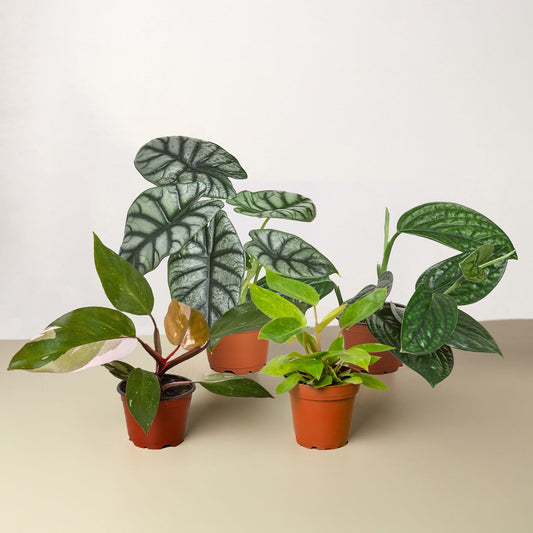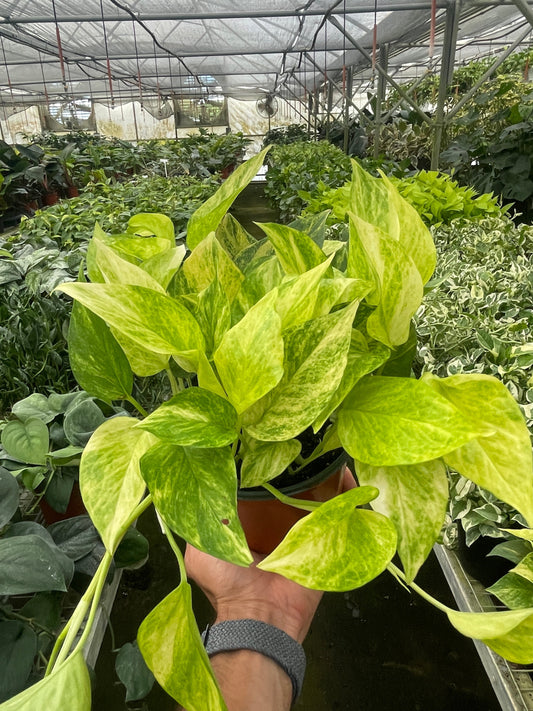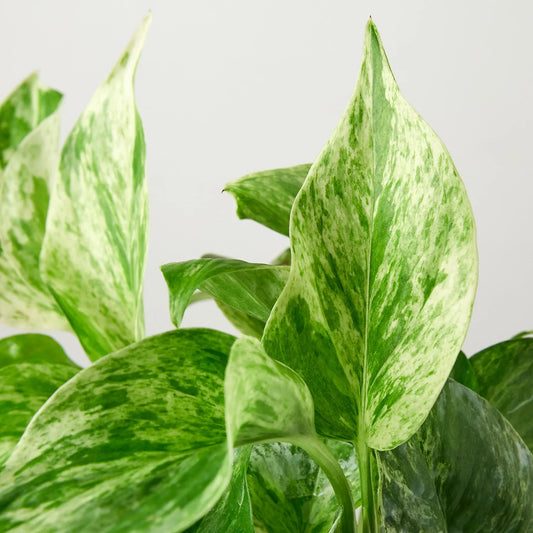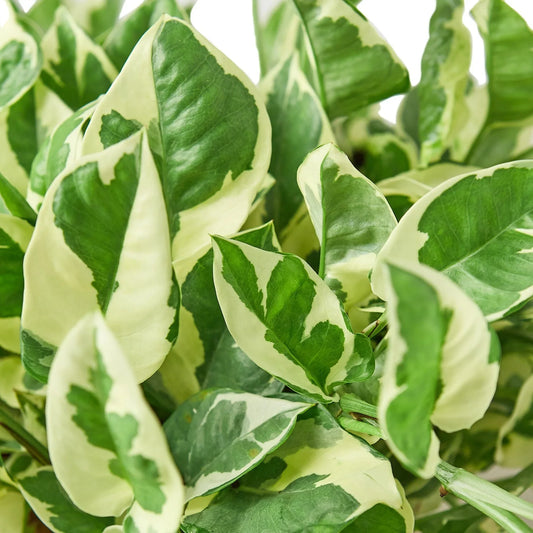Yucca Plant Cold Tolerance: What Temperature Is Too Cold?
Cafe Planta Team
Have you ever wondered how cold is too cold for your beloved yucca plants? It's a common question for plant people and for good reason. Yucca plants, with their striking sword-like leaves and hardy nature, are a popular choice for both indoor and outdoor spaces. However, when winter rolls around, ensuring these plants survive the chill becomes a top priority.
In this article, we'll chat about yucca plants' cold tolerance, providing you with practical tips on how to care for them during the colder months. We'll also explore different yucca varieties, discuss how to prepare them for winter, and offer insights into creating plant-friendly indoor environments. So, let's get started!
Understanding Yucca Plant Cold Tolerance
Yucca plants are generally known for their resilience, but not all species have the same tolerance to cold. Native to arid regions, some yuccas can withstand freezing temperatures, while others may suffer at the slightest chill. Knowing your yucca's specific needs is the first step in ensuring it thrives through winter.
Most yucca species prefer temperatures ranging from 30°F to 90°F. However, some hardy types, like the Yucca filamentosa and Yucca glauca, can handle temperatures as low as 10°F, thanks to their thick leaves and robust root systems. These varieties have evolved to survive in colder climates, making them perfect for outdoor gardens in regions with harsh winters.
On the other hand, indoor yuccas, such as the Yucca elephantipes, are more sensitive to cold. These plants are usually grown in controlled environments and prefer temperatures no lower than 50°F. If you're growing yuccas indoors, maintaining a consistent temperature is crucial to avoid stress and potential damage.
Recognizing Signs of Cold Stress in Yucca Plants
Spotting the signs of cold stress early can help you take action before it's too late. Yucca plants exhibit several symptoms when they're unhappy with the temperature. Understanding these signs can make all the difference in keeping your plant healthy.
Here are some common signs that your yucca might be feeling the cold:
- Leaf discoloration: If you notice yellow or brown spots on the leaves, it could be a sign of cold stress. This discoloration often means that the cells within the leaves have been damaged by the cold.
- Drooping leaves: Yucca leaves that are usually straight and firm may start to droop if the plant is too cold.
- Soft or mushy leaves: Cold temperatures can cause the leaves to become soft or mushy, indicating that the plant's tissues are freezing.
If you see any of these signs, it's time to move your yucca to a warmer spot or provide some protection to help it recover.
Protecting Yucca Plants During Winter
Once you've identified that your yucca is sensitive to the cold, it's crucial to take steps to protect it. Whether your yucca is indoors or outdoors, there are several strategies you can employ to keep it safe from harsh winter conditions.
Outdoor Yuccas
For outdoor yuccas, consider these protective measures:
- Mulching: Applying a layer of mulch around the base of the plant can help insulate the roots and retain moisture. Use organic materials like straw, wood chips, or leaves.
- Covering: When temperatures drop significantly, cover your yucca with burlap or frost cloth to shield it from freezing winds and frost.
- Relocation: If possible, move potted yuccas to a sheltered location, such as a garage or shed, during extreme cold spells.
Indoor Yuccas
For indoor yuccas, try these tips:
- Avoid drafts: Keep your yucca away from windows or doors where cold drafts can seep in.
- Consistent temperature: Ensure the room temperature remains stable, ideally between 60°F and 80°F.
- Humidity levels: Yucca plants prefer low humidity, so avoid placing them near humidifiers or in overly damp rooms.
Preparing Yucca Plants for Winter
Prepping your yucca for winter is akin to putting on a cozy sweater before stepping out into the chill. It's all about taking proactive steps that will ensure your plant is in its best shape to face the cold months ahead.
Start by reducing watering. Yuccas enter a dormancy period in winter and require less water. Overwatering during this time can lead to root rot, especially when the soil takes longer to dry out in cooler temperatures.
Next, consider adjusting your fertilizer routine. During winter, your yucca won't need as many nutrients as it does in the growing season. Reduce or stop fertilizing to prevent nutrient build-up in the soil, which can harm the plant.
Prune dead or damaged leaves before winter sets in. This will not only improve the plant's appearance but also prevent pests and diseases from taking hold. Use clean, sharp scissors to avoid causing unnecessary stress to the plant.
Choosing the Right Yucca Variety for Your Climate
Choosing the right yucca variety for your climate can save you time and effort in the long run. Some types are naturally more suited to colder environments, eliminating the need for extensive winter preparation.
If you live in an area with harsh winters, opt for cold-hardy varieties like:
- Yucca filamentosa: Also known as Adam's Needle, this variety is native to the southeastern United States and can withstand temperatures as low as 10°F.
- Yucca glauca: This variety is found in the Great Plains and can survive in conditions below freezing.
For those in milder climates or looking to grow yuccas indoors, the Yucca elephantipes, or Spineless Yucca, is a great choice. It's less tolerant of cold but thrives in controlled indoor environments.
Understanding your local climate and choosing a yucca variety that can handle it will make plant care during winter much easier.
Creating a Yucca-Friendly Indoor Environment
For plant lovers who keep their yuccas indoors, creating the right environment is essential. Yuccas originated in arid regions and thrive in dry, warm conditions. Bringing a little bit of that desert vibe into your home can help your yucca flourish.
Start with the basics: light. Yuccas love bright, indirect sunlight. A south- or west-facing window is ideal. If natural light is limited, consider supplementing with a grow light to ensure your yucca gets all the light it needs.
Next, think about the air quality. Yuccas prefer dry air, so avoid placing them in overly humid rooms like bathrooms or kitchens. If the air in your home is too humid, a dehumidifier can help create the perfect conditions.
Finally, when it comes to potting, choose a well-draining soil mix. A cactus or succulent mix works well, as it allows excess water to drain away quickly, preventing root rot.
The Role of Pot Placement in Yucca Health
Pot placement might seem trivial, but it plays a significant role in your yucca's health. The right spot can mean the difference between a thriving plant and one that's merely surviving.
Consider these factors when deciding where to place your yucca:
- Light: As mentioned, yuccas need plenty of light, so choose a location that's bright but not exposed to direct sunlight for prolonged periods.
- Temperature: Avoid placing your yucca near heating vents or air conditioning units, as the fluctuating temperatures can stress the plant.
- Traffic: Yuccas have sharp leaves that can be hazardous in high-traffic areas, especially in homes with pets or children. Place them in a spot where they won't be bumped or brushed against frequently.
Finding the perfect spot might take a little trial and error, but once you do, your yucca will thank you.
Winter Care Tips for Yuccas in Containers
For yuccas grown in containers, winter care requires a bit of extra attention. Containers can make plants more susceptible to temperature changes, but with a few adjustments, you can help your yucca weather the winter.
First, consider insulating the pot. Wrapping the container with burlap or bubble wrap can help retain heat and protect the roots from freezing temperatures. This is especially important for pots left outdoors.
If possible, move the container to a sheltered location, such as a garage or a covered porch. This will protect the plant from harsh winds and frost.
Lastly, make sure the container has excellent drainage. Waterlogged soil can freeze and damage the roots. Elevating the pot on bricks or pot feet can prevent water from pooling at the base.
Embracing Seasonal Changes with Yucca Plants
As the seasons change, so do the needs of your yucca plants. Embracing these changes and adjusting your care routine accordingly will ensure your yuccas continue to thrive year-round.
In spring, gradually increase watering and resume fertilizing as the plant comes out of dormancy and begins to grow actively again. This is also a great time to repot or divide your yucca if it has outgrown its container.
During the summer, keep an eye on the light levels and move the plant if needed to prevent leaf burn caused by intense sunlight. Maintain a consistent watering schedule, allowing the soil to dry out completely between waterings.
By fall, start tapering off watering and prepare the plant for the upcoming winter. Prune any dead or damaged leaves and check for pests, as these can become more of a problem as the plant's growth slows down.
Being in tune with your yucca's seasonal needs will make you a more effective plant parent and keep your plants healthy and happy.
Final Thoughts
Yucca plants are a stunning addition to any home or garden, but understanding their cold tolerance is crucial to keeping them healthy. By recognizing the signs of cold stress, choosing the right variety for your climate, and taking proactive steps to protect your plants, you can ensure your yuccas thrive no matter the season.
At Cafe Planta, we're passionate about helping you care for your plants. Whether you're looking for new additions to your collection or need advice on plant care, we're here to help. Feel free to email us or DM us on Instagram. We're excited to share our love for plants with you and support you on your plant journey!



















